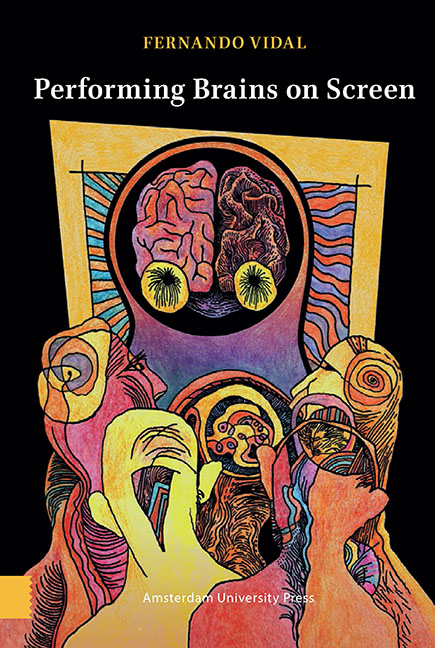Book contents
3 - Naked Brains and Living Heads
Published online by Cambridge University Press: 13 May 2022
Summary
Abstract
This chapter focuses on American B movies of the 1950s to 1970s in which “ectobrains” (naked brains that live outside a body) become full-fledged protagonists. Kept in vats or freely moving, ectobrains are usually evil and seek power. A comparison with films driven by interspecies and partial-brain transplantations or displaying detached non-cerebral body parts and heads kept alive separately from the rest of the body illuminates their connections to philosophical thought experiments, and their meaning with regard to personhood and embodiment. The paradox of the naked brain is that, ultimately, its filmic performance requires fully embodied characters; while films may begin by assuming that “we are our brains,” their narrative and visual development ends up questioning or nuancing this initial assumption.
Keywords: B movie, brain in a vat, ectobrain, embodiment, personhood, thought experiment
In Donovan's Brain (1953), surgeon Patrick Cory (Lew Ayres) dreams of maintaining brains alive. After wicked millionaire Warren H. Donovan's airplane crashes in the desert, near Pat's home laboratory, the doctor makes an unsuccessful effort to save him. On that morning, he and his collaborator Frank (Gene Evans), assisted by Pat's devoted wife Jan (Nancy Davis, the future Mrs. Ronald Reagan), had already approached their goal: “Something great, kids: a brain without a body – alive!” The organ was a monkey’s. They now extract Donovan's brain and place it in a vat. Sustained by an electric current in a nourishing solution, its vital autonomy and material growth are highlighted by close-ups of the pulsating and glowing organ (we may here regret the film is black-and-white), or shot/counter-shots between it and a character or between the brain and the oscillograph that registers its activity (Brainfilms 3.1):
PAT: If this brain lives, maybe we can discover how it thinks.
FRANK: Impossible. It can't see, it can't hear, and it can't feel.
PAT: That's all right. The brain itself can’t. … But this brain contains all the knowledge and experience of Warren Donovan's entire life. In other words, all his thoughts.
From this early moment on, the movie revolves around Donovan's brain telepathically manipulating Pat in pursuit of its ambition to take over the world's financial system.
- Type
- Chapter
- Information
- Performing Brains on Screen , pp. 87 - 126Publisher: Amsterdam University PressPrint publication year: 2022



